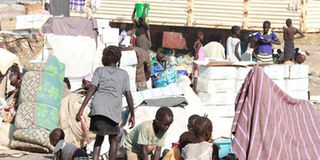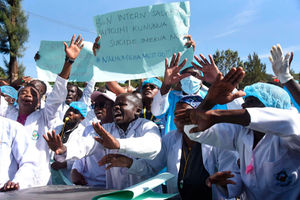United Nations warns risk of famine is real in South Sudan

What you need to know:
- In its latest report which cited food security and livelihoods experts, the UN Office for Coordination of Humanitarian Affairs (OCHA) said South Sudanese are likely to face extreme levels of food insecurity in an extended lean season from February to July 2017.
Juba. The UN humanitarian agency has warned that the risk of famine in South Sudan is real for thousands of people in conflict-affected communities and food deficit areas.
In its latest report which cited food security and livelihoods experts, the UN Office for Coordination of Humanitarian Affairs (OCHA) said South Sudanese are likely to face extreme levels of food insecurity in an extended lean season from February to July 2017.
“Despite the harvest season, levels of acute malnutrition remained high, with the prevalence of Global Acute Malnutrition (GAM), recorded by SMART surveys conducted between September and November 2016, remaining serious or worse (10 percent or higher),” OCHA said in the report released on Friday evening.
The report says the continued devaluation of the South Sudanese Pound (SSP), insecurity along key road routes, below-average harvests, and the consequent reduction of food availability in local markets have driven prices to record levels.
In November 2016, retail sorghum prices in Aweil, Wau, and Juba averaged 7.7 U.S. dollars /kg, four times higher than the previous year and 10 to 15 times higher than in November 2013, the month before the initial outbreak of conflict.
“Urban populations are struggling to cope, with an estimated 400,000 people in Juba, Wau and Aweil now severely food insecure,” the UN said.
According to OCHA, nutrition is expected to deteriorate to “critical” levels during the lean season as food stocks are depleted and prices are likely to peak. The report says as many households were unable to cultivate, people continue to rely primarily on fish and wild foods to survive. (Xinhua)




